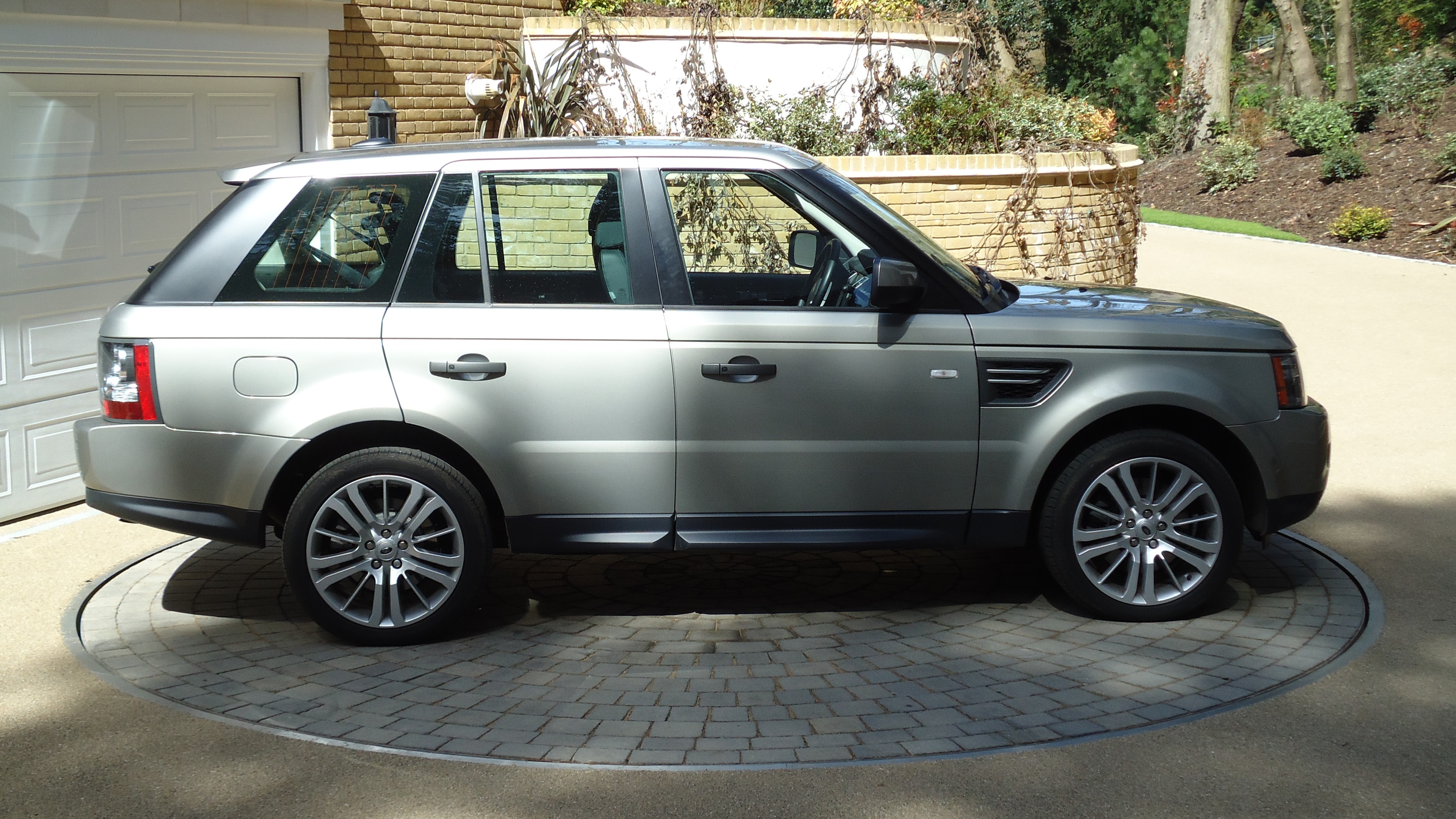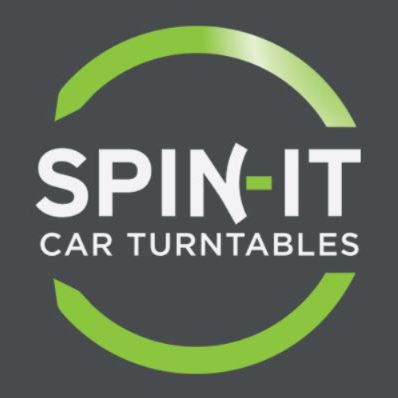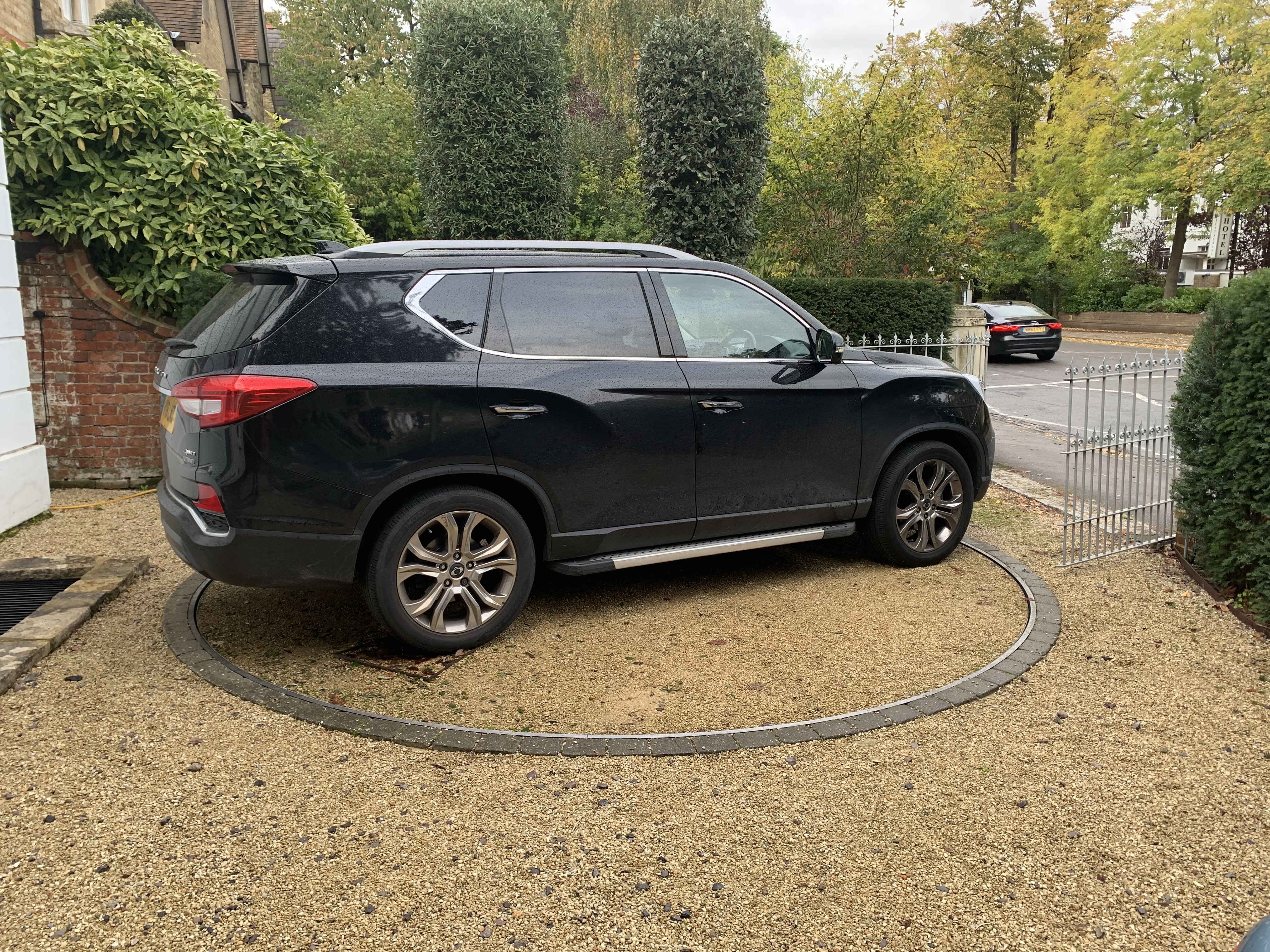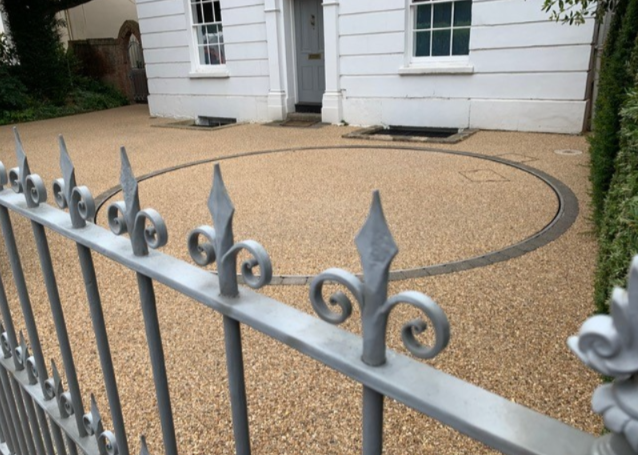Rotating driveways: What are they and do I really need one?
An installer explains how the right car turntable could revolutionise parking at your property

A rotating driveway is much like a turntable for trains, but used by cars in a domestic setting. Otherwise known as ‘driveway turntables’ or ‘car turntables’, these drive-on facilities can rotate a stationary car so that the vehicle will be able to park or depart in a forward gear, without needing to manoeuvre.
As we’ll see, there are a few different types of rotating driveway, ranging from premium, professionally installed examples to lower-cost DIY turntables that can be installed from a kit. Whichever model you choose, these clever driveway features will enable you to turn a parked car on the spot.
They’re among the latest trending driveway ideas making life easier for motorists, but a rotating driveway requires a major investment of money and effort (especially if you’re installing it yourself). This guide will help you decide whether it’s worthwhile to install one at your home.

SPIN-IT is a leading manufacturer and installer of rotating driveways, based in the UK and now supplying car turntables to customers internationally. As Director, Kieron O’Connor leads the company’s team of experienced craftsmen.
SPIN-IT kindly provided the photos used in this article.
Who needs a rotating driveway?
“There’s a whole range of reasons why people get rotating driveways, usually in a domestic context,” says Kieron O’Connor, director of specialist rotating driveway provider, SPIN-IT.
“One common reason is limited off-street parking, which is a major consideration around London especially.”
Rotating driveways are often installed on tight driveways, where a car cannot be safely manoeuvred into a parking place such as a garage. If you’ve recently moved into a property with limited turning room on the driveway, or you’ve acquired a second vehicle that’s now taking up space, then you might find that a rotating driveway is the best solution for the access problem.
“There are cases where it’s awkward to reverse onto the driveway – for example, where a family has collected more cars because the grown-up kids haven’t moved out,” says O’Connor.
“A rotating driveway makes it easier to manoeuvre for these multi-car households.”
The same car turntable mechanisms used in rotating driveways can also be installed in basements or underground parking facilities.

For some motorists, getting a rotating driveway is a quality of life upgrade, rather than a practical necessity. Having your car oriented into the perfect position via turntable, rather than executing an awkward multi-point turn, is a real luxury for drivers arriving home weary from a stressful commute. Some car-proud motorists use their rotating driveway to conveniently admire or photograph their vehicle from different angles.
If you’d like a rotating driveway but it’s not essential, deciding whether to install one of these features comes down to weighing up the pros and cons. On the plus side, a rotating driveway can make life easier and save you time, every day you drive.
The major drawbacks are expense and disruption.
“The installation isn’t cheap – costs can range from several thousand pounds upwards depending on size, groundwork and the complexity of the system,” says Clive Holland, a home improvement expert and Fix Radio presenter.
“While the benefits are strong, especially for households with safety concerns over elderly residents or small children, it’s important to weigh up the cost and practicality before committing,” he adds.
A large section of driveway, typically with a depth of over 20cm, will need to be dug up to provide space for the turntable’s workings, and you’ll need to run an electricity supply to the turntable.

Clive Holland is the former host of Cowboy Trap on the BBC. Now a broadcaster on Fix Radio, the UK’s only national radio station for builders and tradespeople, Holland is one of the UK’s leading property and DIY experts.
How do rotating driveways work?
Most rotating driveways have an underground assembly including a spindle and turntable mechanism, combined with a ground-level plate (or other surface) that you can drive onto.
The turntable mechanism of a rotating driveway needs electricity in order to turn, and this is typically supplied via a specially routed mains connection.
“Lighting and power supply are essential for a rotating driveway, particularly if it’s motorised, so you’ll likely need an electrician involved,” says Holland.
“Drainage systems also need to be planned around a rotating driveway, as the rotating platform mustn’t trap surface water,” he adds.
Various mechanisms can be used to control the turning action of a rotating driveway, including remote controls and fixed-position control cabinets.
Most rotating driveways follow this basic pattern, although some mechanical differences do exist between models
“We’ve been installing rotating driveways for 15 years, and while our designs have improved and developed, the fundamentals have stayed the same,” O’Connor notes.

Types of rotating driveway
Although most rotating driveways have a basically similar mechanism, they can be divided into a few different categories that may have a bearing on cost, maintenance requirements and functionality.
For example, some rotating driveways are professionally installed, whereas others are delivered as a DIY kit. Self-installation will save you some upfront cost, while a professional installation may give you better reliability and greater peace of mind (it also typically places some liability for effective installation on the provider).
Another key point of difference between rotating driveways is their turntable material and finish.
“There are several options available, including steel-topped, aluminium-topped and painted,” says O’Connor.
“We also do rotating driveways that blend with driveway landscaping materials such as paving, with just a steel ring to identify the edge of the feature. Depending on the finish, the rotating driveway can either become ‘invisible’ or be a feature.”
‘Recessed’ rotating driveways that blend in with landscaping materials often have a lower upfront cost, whereas steel and especially aluminium models are more expensive, although these alloy-topped options are often hardy and require little ongoing upkeep.
Rotating driveways also differ in size. Their diameter is typically chosen to suit the owner’s vehicle (or the available footprint). As you’d expect, the costs of the turntable and installation increase with the size.
FAQs
Do you need planning permission for a rotating driveway?
It’s unlikely that you’ll require planning permission to install a rotating driveway. However, there are exceptions, including some listed buildings and properties in officially designated conservation areas. If in doubt, check with your local authority before you start planning to install a rotating driveway.
Rather than hindering the planning process, a rotating driveway will sometimes prove key to securing wider-ranging driveway planning permissions. O’Connor explains:
“In densely populated areas such as London, you could be redeveloping the frontage of a house, but the local authority might not grant you permission if the design is such that you’d be reversing off the drive and onto a busy road.
“With a rotating driveway, you can show that you’d be able to drive on and off in a forward gear, which removes planning objections as well as being convenient.”
Can a rotating driveway be installed anywhere?
While a rotating driveway will fit comfortably onto certain driveways, there are several possible reasons why this might not apply to your property. One potential obstacle is the breadth of your driveway.
“Some people imagine a rotating driveway is a bit of magic, but then they realise you have to factor in the width as well as the length of the car,” says O’Connor.
“Turning the vehicle creates a footprint and you’ve got to have enough room to accommodate that. We ask customers to send images of the site before installation so that we can assess the feasibility, or we’ll do a site visit to offer advice in person.”
The ground beneath your driveway will also affect the feasibility (or at least the difficulty) of installing a rotating driveway. If there is very hard rock, buried stone or concrete close to the surface, it could be challenging to dig to the required depth.
Locating a car turntable above utility lines is strongly advised against.
“The installation may require relocating utilities like water or gas lines if they run through the intended area, and you’ll need to factor in access for maintenance,” says Holland.
“Like any mechanical system, a turntable driveway will need regular servicing to keep it running smoothly, particularly during winter months when ice and debris could cause issues.”
For more guidance on how to create a driveway that boosts kerb appeal and makes your vehicle right at home, see our features on driveway lighting ideas, driveway fence ideas and driveway gates.
Get the Homebuilding & Renovating Newsletter
Bring your dream home to life with expert advice, how to guides and design inspiration. Sign up for our newsletter and get two free tickets to a Homebuilding & Renovating Show near you.
Pete Wise is a freelance writer and keen DIYer from Leeds. Pete's tool reviews have featured in titles including Homebuilding & Renovating, Ideal Home and The Independent. He also writes features and news articles for publications such as The Guardian, BBC Good Food and T3. When he isn't busy writing, Pete can often be found at libraries, pubs and live music venues. He finds tile-cutting strangely zen.

